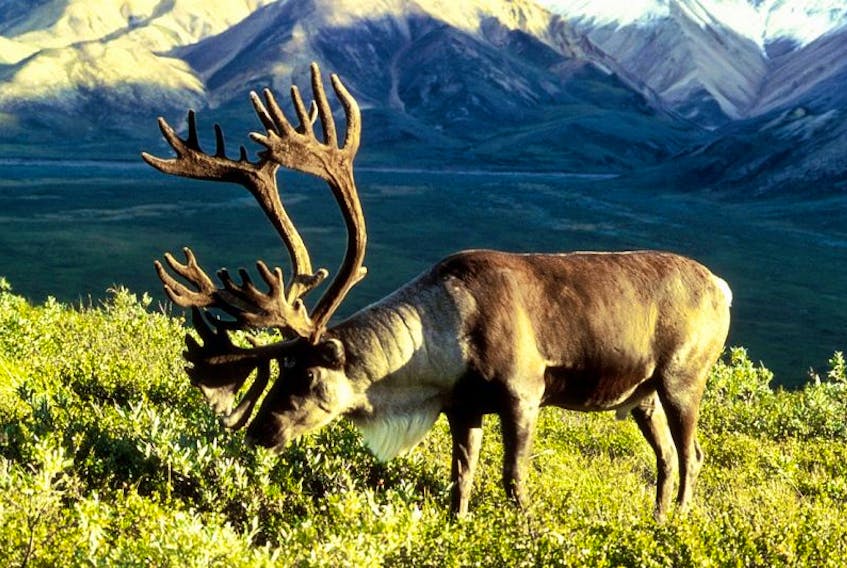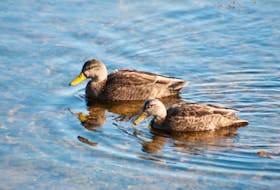Surrounding provinces contain regions of surviving wilderness with larger examples of life, while visitors to the “Gentle Isle” might easily assume it was always an expanse of farmland and pasture with the occasional vacant lot. At least that was my impression upon my first youthful visit over a decade back — a province of exceptional beauty, but with very few surprises.
I was wrong, of course, proven so by knowledgeable Islanders with a professional interest in dispelling such misconceptions. The first was retired biologist Rosemary Curley, who is authoring “The Mammals of Prince Edward Island,” destined for publication with Island Studies Press.
I approached Curley for her role as president of the Natural History Society of P.E.I., known more commonly as Nature P.E.I. Their work is equal parts education and conservation, committed to, “defending the flora and fauna of Prince Edward Island to the last breath,” as she put it.
The natural history of our humble province is best begun with the conclusion of the last Ice Age 11,700 years ago, Curley told me, as the glaciers that smothered our nation for millennia finally melted off. In this way P.E.I. and the rest of the Maritimes had a great weight lifted off them, and, much like a beach ball held underwater, they rose to the surface with unbridled enthusiasm, reaching such impressive heights at one time that all three provinces, about 10,000 years ago, were connected by a land bridge across the Northumberland Strait.
The lifespan of this land bridge is still a matter of debate, Curley told me, but it’s thought to have disappeared about 5,000 years ago as the Maritime provinces settled back down. Before it did, however, this bridge allowed for the colonization of Prince Edward Island by the beasts of the mainland — the first chapter in Island ecology.
Our region was still cold back then, technically tundra, so our first colonists were those adept to the chill — the iconic caribou, fast to inherit our Island of red, and the wolf, which is never far behind. Trees made the crossing 8,000 years ago to follow the caribou up, accompanied at one time or another by the Canadian lynx, black bear, pine marten, red fox and a procession of others. Some species, however, arrived in our region too late for this colonization effort, the moose thought to be among them.
By the time Jacques Cartier and his French counterparts sailed by in later centuries, Prince Edward Island was found in a state of genuine old growth, its central highlands dominated largely by beech, with accompanying maple, hemlock and pine. The river valleys of the east supported black spruce as well and in the west were swaths of cedar, ash and elm.
Curley tells me these regional variations were not dramatic and her reasoning was simple enough — lacking natural barriers such as the mountains and major rivers which divide up other provinces, the inhabitants of P.E.I., plant or animal, would have had full range of the entire Island. The thought of caribou herds stampeding through the old growth of Kensington, Souris or my hometown of O’Leary is as marvellous as it is bizarre.
The Caribou and the Wolf
Where you find the caribou, you will find the wolf — this is as clear a dictum as biology has ever offered us and P.E.I. appears to have been no exception. Their fates were intertwined even before the arrival of Europeans, it would seem, and following French settlement they conspired in a pair of quiet extinctions, leaving behind little evidence for us to piece together.
For these scraps of history I turned to Doug Sobey, a retired ecologist from the University of Ulster, who promptly sent me his 2007 paper entitled “An Analysis of the Historical Records for the Native Mammalian Fauna of Prince Edward Island”; a fascinating read if you ever get the time.
In it Sobey dates the earliest account of Island caribou to 1672, considerably later than the Island’s formal discovery by Europeans in 1534. The author of this particular account describes our caribou as being few in number, but Curley was quick to put this into context. Since Jacques Cartier’s arrival over a century earlier, the Gulf of St Lawrence had hosted innumerable fishermen and fur traders, both taking regular harvests from the Island’s caribou, or so she suspects. In this way the few caribou of 1672 might have been the remains of a once great population, already lessened by our frequent visits.
“If they were in decline,” Curley reasons, “they had to have declined from something.”
The settlement of our young province began in 1720 and our lives alongside these caribou commenced in earnest, only to concluded just as abruptly. The harvesting supposed by Curley and the loss of habitat to settlers saw an end to these native deer in mere decades. The last record to suggest their continuity comes from 1765, putting their numbers at, “some, but very few.”
“There is a tendency for people to believe that (a locally extinct) animal is still present long after its disappearance,” Sobey points out in his paper. It’s his and Curley’s expectation that this 1765 document was recording the recent memory of these caribou, not their actually presence; more than likely they’d already disappeared.
Curley said that caribou remains have been found in notable quality at both Robinson’s Island inside P.E.I. National Park and at East Point, a foreleg and teeth respectively. But their antlers have been found all across the province, leading to the mistaken belief that moose once graced the Isle.
The evidence for wolves is regrettably sparse by comparison, contained to a single reliable account from 1721. It said these wolves were of a “prodigious size” and that the author had sent a pelt to France, but thereafter the silence is deafening. It’s tantalizing to me just how large these wolves might have been compared to those of the mainland, even those I’ve seen up close in Shubenacadie Wildlife Park in Nova Scotia. They are confident creatures, not so skulking as their coyote cousins; tall and lithe yet unsettling in their canine familiarity. When or why they disappeared is of course a mystery, but hunting, habitat loss and the lack of caribou are prime suspects in my mind.
“The European attitude was to get rid of any predators,” Curley told me. “Wolves would have been on the list from day one.”
The Persecution of Predators
Unfortunately this attitude applied to all the Island’s predators, its bears and lynx in particular. I won’t deny the dangers these animals pose to human beings — one must acknowledge their strengths and behave accordingly — but after hundreds of years of biological cleansing we find they’re absent from most of our region’s ecosystems, which is problematic.
These predators scare populations of their herbivore prey away from overgrazed sites and eat their sickest members, allowing for both healthy prey and the regeneration of local vegetation. The eradication of these predators, however, allows for overconsumption of habitat and the spread of disease. The more we learn about biology the more we come to miss these bears, lynx and others, without whom an ecosystem’s potential is stifled.
In the face of this intolerance our province’s European settlers made no effort to co-exist with Island predators. As early livestock were allowed to roam freely through the great forests of P.E.I., they were of course preyed upon by these marvellous animals. Humans fell victim as well, and before long both bears and lynx were subject to bounties.
The abundance of black bears in the early days of European settlement was described as unbelievable, and their impacts on free roaming livestock considerable. So in the 1790’s a price of 15 shillings was placed on each of their heads, followed by the less offensive Canadian lynx in the 1820’s, meriting five shillings each. Between 1820-61 bounties were collected on over a thousand bears and an estimated 357 lynx, the few survivors thought to have taken refuge in the Island’s wooded tips, both east and west.
By 1890 the lynx was unheard of, dependent on forest cover that by then was less than 30 per cent of the province. The bear, however, is an adaptive omnivore, its diet diverse and its habitat needs flexible. The last individual wasn’t shot until 1927.
Past to Present
Rewilding is a relatively recent phenomena about which I’m enthusiastic — the restoration of ecosystems to their pre-European state so our provincial, national and international biodiversity might find respite. Above and beyond the moral arguments, rewilding bolsters the ecosystems on which we depend for clean air, water and soil, and given time could restore the natural beauty we’ve come to see as valuable, intrinsically and economically. In Nova Scotia, for example, we’ve reintroduced the marten, moose and at least attempted bringing back the caribou, each a step in the right direction.
Up north in Gaspésie I walked through woods populated with black bears and even came within earshot of a couple. Locals don’t fear them because they follow the simple rules: Don’t corner them and be wary of mothers with cubs. Otherwise these bears avoid humans diligently. I swear I saw one cross the trail ahead of me shortly after nightfall and while I was scared stiff, I fast fell in love with this intact ecosystem.
But while this trend of wildlife appreciation and restoration has reached parts of Atlantic Canada, it has never been attempted on P.E.I. Island forest cover is approaching 50 per cent, Curley tells me, which is an encouraging climb, but these forests are too young, too disturbed and too fragmented to support the caribou and others. I dare say attitudes are still very much against big predators and I certainly don’t condemn folks for thinking so, most of whom have grown up in their absence.
So this Island of ours was once the picture of wildness, its native flora and fauna a worthy challenger for any neighbouring province, although long since tamed into oblivion. It’s a side of Prince Edward Island I would give anything to see, but for now it’s enough to know that, if you look deep enough into its rusty red dirt, you’ll find history.
Zack Metcalfe is a freelance environmental journalist, author, and writer of the Endangered Perspective. He operates out of Halifax, N.S. and can be reached at [email protected].









